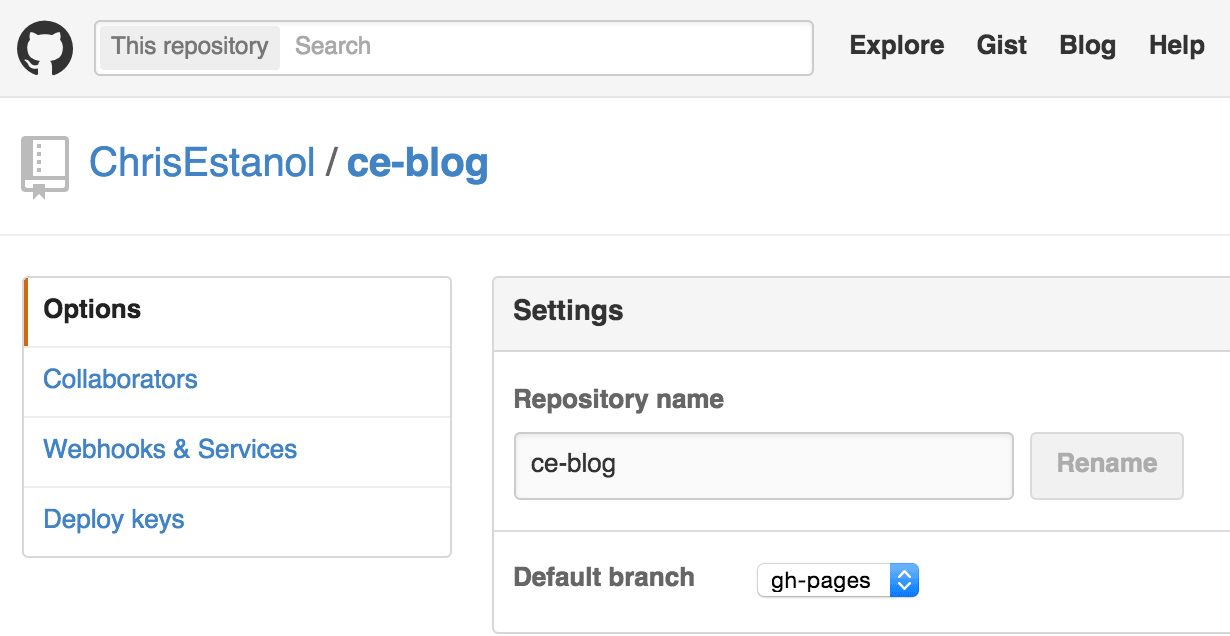As Github users we are all entitled an unlimited number of repositories to hold on our precious code and make it easy to control versions of our builds. Github also enable hosting of static websites which means that a basic bootstrap webpage can be hosted for free thanks to github. Jekyll, which is also technicaly a static website comes in handy and can also be hosted for free thanks to our friends at github.
Isn't it a relief to know that you won't have to search for a hosting provider that is both performant and cheap, set up an FTP to upload your website and do that everytime you make the slightest update...
This is why Jekyll has been so popular because if you are already familiar with git and github updating your portfolio or publishing a blog post your is just a commit away.
Github Pages
There are two ways to host your webpage with Github. There are User/Organisations pages or Project pages. Here are the main differences between the two:
- You can host your main website on
http(s)://<username>.github.io, where username is your username (or organisation name) on GitHub and deploy your projects onhttp(s)://<username>.github.io/<projectname>. - You only have one user page but you can host an unlimited amount of project pages
- For User pages you need to name you repository
<username>.github.iofor github to publish it as your web page. For project pages you can give it the name you like. - User/Organisations page will remain on the master branch whereas Project pages will need to be pushed on a special branch named
gh-pages. You will then need to set up gh-pages as your default page.

You can get more info about the different hosting modes on github help page.
Custom Domain
You can use custom domain names with both Project pages and User pages. The set up is fairly easy:
Here is an example of my DNS settings with Cloudflare

That's all you need!
comments powered by Disqus
